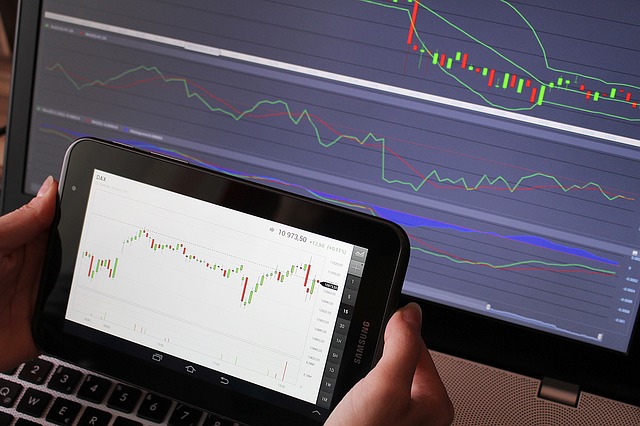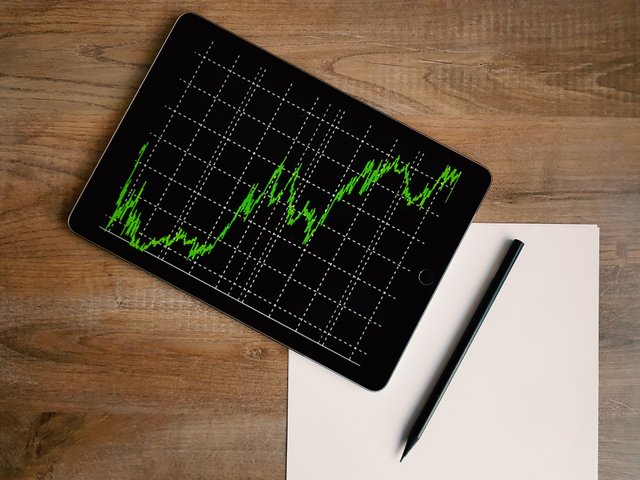¿Trading is only technical analysis?
¿Trading is only technical analysis?
My friends my english is not very good. To make this post in English I used a translator and dictionary several times. I apologize, if you find a mistake with the translation. I am open to hear your suggestions and I promise for the following post, to improve my English.
I want to share my experience on what I consider the fundamentals or the basis of trading
Trading is the art of speculating in financial markets.
Speculate: make assumptions about something that is not known with certainty.
Financial market: it is a space in which the exchanges of financial instruments are made and their prices are defined.
In this post we will talk about trading, but I will not focus on technical or fundamental analysis. I am going to speak about the basis or the basis of trading.
As we can read in the cursive letters at the beginning of the post: "Trading is the art of speculating in financial markets" Attention in the word "speculate":
Definition: Make assumptions about something that is not known with certainty (definition of dictionary)
So, as the definition says: trading is a set of operations where we do not have a hundred percent security of what will happen. How can we make a profit if we do not know what will happen? Well, the market is made up of several factors, but the one that interests us in this post, is the "people" component. As we all know, each person is unique in an emotional and intellectual sense. Now imagine a market made up of millions of "emotional" people making decisions: I imagine an arrow breaking in millions of directions, where each address represents a person. Something similar happens in the markets, which, have as basic component: people. This is one of the reasons why our technical or fundamental analysis will often fail. To be sure that it always good, we should know what the millions of people who make up a market think and feel. Impossible, right?
The idea that express in the sentences up is a good reason to say that trading is a set of operations based on probability of occurrence of events.
Definition: Probability is the greater or lesser possibility that a certain event will occur. In other words, his notion comes from the need to measure or quantitatively determine the certainty or doubt that a given event occurs or not.
The definition tells us that a probability is the greater or lesser possibility that a certain event will occur. Attention to the words "major or minor" as they are important for what we will explain below: what do we try to do through technical or fundamental analysis? We try to reduce risk. Explained in another way: through the technical analysis of the asset, we try to put in our favor, most of the chances of a certain event occurring. Let's repeat again: "most possibilities", we do not say, one hundred percent of possibilities (since we aren´t in the thoughts of the people who compose the market and therefore, we will not know what decision to take).

Now, let's go with the second part of the definition of probability: "need to measure or quantitatively determine mind". Trading is a set of operations based on probabilities or possibilities, everything could happen, so, what is the use of technical analysis? Through technical analysis we look for a "quantified" statistical advantage that puts most of the probabilities in our favor. Our analysis of graphs and market research will make the chances of success great, but still only a possibility/probability. Whether we use Murphy's full book to apply his theories of technical analysis or whether we are wise in technological, political, global issues ... we will always run the risk that market run opposite of our analysis. And if we always run the risk of our analysis failing. How do we avoid losing all our capital? Here comes the use of risk control tools.
But first let's talk a bit about the term "statistical advantage". The technical analysis allows us to find a statistical advantage and the action of writing the results allows us to quantify it. Easy? We can achieve a great advantage in the positive occurrence of the possibilities by correctly using the tools established by the technical analysis, such as: supports, resistances, trend lines, reading candles and volume, all together can do that the chances of success are high (not all the possibilities in our favor, only one part ... I repeat it so that it will remain engraved in our subconscious).
The statistical advantage will not be obtained simply by implementing technical analysis, this goes much further. We arrived at the term that I like the most and the best results has given me: "PLAN DE TRADING" What is a trading plan? A trading plan is a document / procedure / rules, which as a flight plan, determines and establishes everything we will do and will not do when we operate in the market, that is, the reasons why we open or close a position; when will we do it; how we manage risk; with how much capital we will open a position; In what frames of time we will analyze the market; what time of day will we do it; what news will we follow.
We already know that implementing a trading plan gives us a quantified statistical advantage over other market participants, but now, how do we quantify the statistical advantage? Writing the results of our operations, when applying the trading plan! We establish a trading plan that suits our operations, then we perform a number of operations (can be 20 or more), regardless of the results, using the trading plan. We must commit to applying our trading plan again and again without changing a single comma from the plan. The more operations we do, the more we get to the probability that will lead us to success. After performing a large number of operations following the trading plan we will be able to compare the results since they will now have statistical validity. If the results are not positive, then, to change some step of the trading plan and to perform the same procedure to statistically validate our new trading plan.

Finally, one of the most important issues that will always be essential in our trading plan are risk control tools. When setting the profit / loss ratio for each operation and using the typical "stop loss or stop limit" options we are controlling the risk in our operation.
I hope the post will be useful
Original post:
https://steemit.com/spanish/@ramiroldu/trading-lo-que-pocos-cuentan-y-pocos-saben-parte-1
https://steemit.com/spanish/@ramiroldu/trading-lo-which-second-and-pocos-saben-part-2
To make this post use free images obtained from Pexels and Pixabay
Do not forget to follow me and share this information with passionate people in trading:
https://steemit.com/@ramiroldu
Thank you for taking the time to read my post.
Remember:
*🚨 "Do not invest money that requires for your basic needs, just invest the money you do not need to live, money that if you lose it will not cause you big financial or family problems"
*🚨 "Trading and investments are composed of operations based on probabilities, so no one can have the absolute truth, everything could happen.In this publication we try to analyze information about cryptones to reduce risk. "
*🚨 "Always operate at your own risk Never open an operation with money you are not willing to lose and without using risk control tools"
*🚨 "Diversify, do not put all the eggs in the same bucket"
You are free to collaborate and allow me to continue:
BTC: 1Njt45q7KrCaknmJ7vi472fPK3pQhc5g9e
ETH: 0x3764a4eaf34005df06371441d21a35f22c9d9145

great information here!
Tks